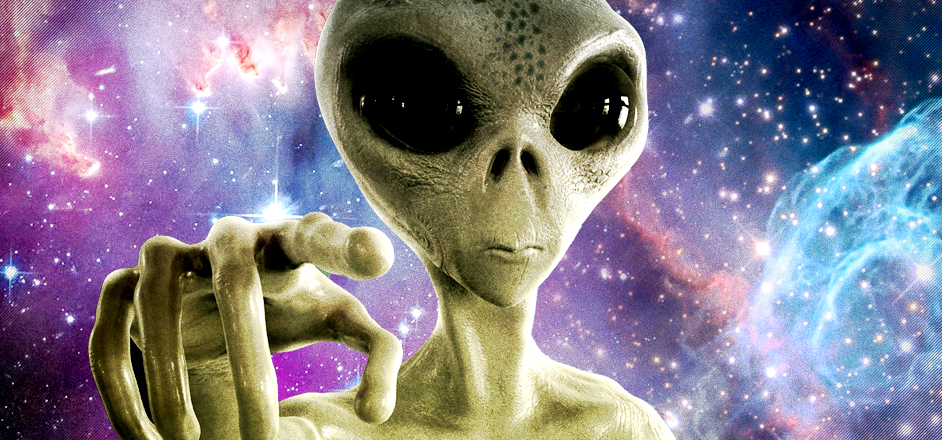Out in space last week a star blinked, and a field of satellite dishes cranked into motion turning metal ears toward that star — like a dog who just spotted a bird perking up her ears to hear the chirp.
This is the Allen Telescope Array in NorCal, and they simultaneously swung toward something in our galaxy called Tabby's Star. Citizen scientists first noticed in 2011 that it had something circling it, something fantastic that doesn't look like a planet or another star or a belt of asteroids, and that shook up the world because it might be something crazy and new.
Last week, the star dimmed again, and the satellites swung toward it, listening … for aliens.
"Nobody knows what's going on with Tabby's Star," one of the people who controls those telescopes, Seth Shostak, senior astronomer at the Search for Extraterrestrial Intelligence, says by phone. "One possibility is that there's some sort of astroengineering there."
Astroengineering. Aliens. Maybe it's a giant solar panel powering a huge artificial world … a so-called Dyson sphere.
This isn't proven at all, but it's not fake. It's not a rumor. Shostak guesses the chances that we are looking, for the first time, at an alien structure are "maybe 5 percent, maybe less." So his organization's telescopes are listening.
"What you're looking for is evidence that there's somebody's there," Shostak says.
So far, there have been no radio blips that sound unnatural. No blasts of prime numbers, no sequence of atomic numbers, no binary code spelling out the message, "Check out this awesome shit we aliens made, bruh!"
The same static bounced into SETI's telescopes in 2015, the last time the star dimmed, when the telescopes also craned to hear. That was disappointing, but no reason to stop listening, Shostak says.
"You wouldn't say to Captain Cook, 'All you found yesterday was water, why don't you stop looking, what makes you think you'll find an island today?'" he says. "One always hopes."
Despite rumors, SETI has never found a signal anywhere in the universe that sounds like Abbott and Costello from "Arrival."
But absence of evidence is not evidence of absence. The math is in life's favor. The universe is big as hell; life comparatively sprung up on Earth as quick as weeds in a garden; with all that space and time, why would we be the anomaly, as Lil Dicky so elegantly asked?
Whether Tabby's Star's weirdness is aliens or not, Shostak is amazingly sure we're close to finding that evidence we crave.
"We're gonna find E.T. in the next couple dozen years, or I'll buy you a cup of coffee," Shostak bet his audience in a TED talk.
Shostak tells us that, if we do find aliens, they're more likely to be robotic than biological. "I would bet on the robots," he says.
Sure, newer models suggest that natural phenomena like rings and asteroids can explain the dimming of Tabby's Star.
Shostak is unfazed: "It's unlikely," he says, "But one should check these things out."



Leave a Reply
You must be logged in to post a comment.